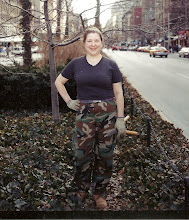Dear Reader,
I have recently been visiting my family in West Virginia. As I said in my previous post, “On the Road, Again,” this is sometimes a difficult task. Occasionally, the one saving grace of the visits is what I see around me. There is myriad wildlife; a herd of deer, a flock of wild turkeys, a rainbow of birds, even in the wintertime.
I’ve also seen hummingbirds (summer only) bats, bears, groundhogs, skunks, rabbits, and a variety of insects, large and small, including beautiful green luna moths (think of that Lunesta ad on TV), which are the bats’ favorite food, and ladybugs.
In the dead of winter, there are ladybugs everywhere indoors. These are the result of a WV program to try to stop one insect by introducing another; in this case, they are trying to curtail the spread of the gypsy moth by releasing millions of ladybugs into the environment. When it gets cold, all of these cute little ladybugs head for warmth indoors, and make themselves at home in everyones' houses. I love ladybugs in the garden, but they are not as cute or pleasant inside a house, though I still don’t have the heart to squash them!
On the domestic side there are cattle, chickens, who provide the eggs my sister and her son eat, horses, and of late, a goat! Oh, and the resident cats and dogs, who live outdoors in houses or the barn, at least for the most part.
Despite all of this zoology, the thing that really sets this place apart from the City is the sky. Not the daytime sky so much; we get beautiful blue-sky days in the City that I wouldn’t trade for anywhere else. But on a clear night out in the country, the sky is nearly unrecognizable from that of even the clearest night in the City. It’s easy to forget how many stars and other celestial bodies there are in the night sky. In addition to the few major items we can see in the City: the Moon, Mars, sometimes, Venus, occasionally, and the constellation Orion, there are dozens of other formations, and literally millions of visible stars.
On a clear night in West Virginia I can see the above-listed subjects, plus the Big and Little Dippers (Ursas Major and Minor); Cassiopeia; and many others that I know are constellations, and that I can never remember the names of. But in addition to these, there are stars upon stars; instead of a few stars with big gaps of black sky, as in the City night sky, there are millions of stars, with small gaps. It’s just remarkable, and makes me realize how small we truly are.
I think it would be really neat if, maybe once a year, we could have a “Black-Out Night” in the City. At a predetermined hour, all of the lights in the City and its environs would be turned off for 15 minutes, to allow people who never get the chance to get away from the continuous daytime of the urban environment to have the opportunity to see what the night sky actually looks like.
Who knows, it might make a big difference to some people. Maybe some young new astronomers would be inspired, or maybe some people wouldn’t feel so big and invulnerable. Probably not, but I can wish upon a star, can’t I?
More to come,
Catbird
Subscribe to:
Post Comments (Atom)

No comments:
Post a Comment